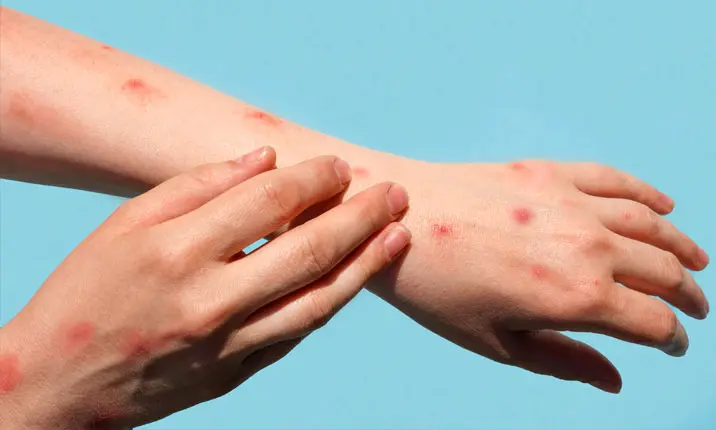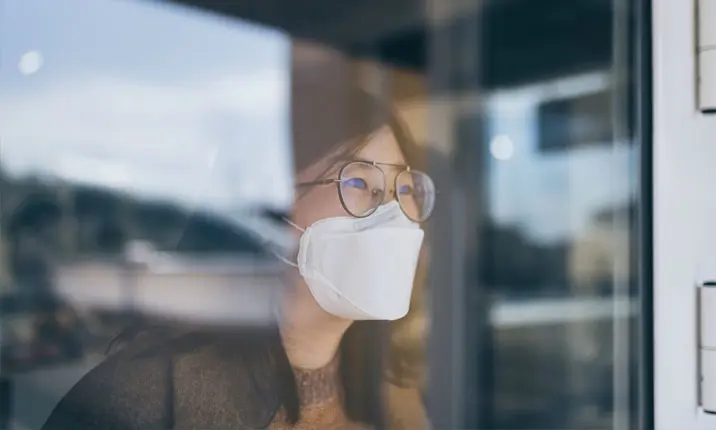-
-
Khu vực chăm sóc và điều trị


Nguồn: Getty Images
Những Điều Bạn Cần Biết Về Bệnh Đậu Mùa Khỉ
Cập nhật lần cuối: 08 Tháng Bảy 2022 | 4 phút - Thời gian đọc
Với những ca nhiễm đậu mùa khỉ được ghi nhận tại Singapore, dưới đây là những điều bạn cần biết về loại virus này, cách thức lây truyền của nó, các triệu chứng và những gì cần làm nếu bạn là người tiếp xúc gần với một bệnh nhân.
Tổ Chức Y Tế Thế Giới (WHO) lần đầu tiên gióng lên hồi chuông cảnh báo về sự lây lan của đậu mùa khỉ, một căn bệnh truyền nhiễm hiếm gặp, vào tháng Năm 2022. Kể từ đó, các ca nhiễm đậu mùa khỉ ngày càng gia tăng đã được ghi nhận tại các quốc gia không phải là vùng bệnh đặc hữu, sau khi xuất hiện lần đầu ở châu Âu. Vào thời điểm công bố bài viết, tuyên bố mới nhất của WHO cho thấy có hơn 7,000 ca lây nhiễm đậu mùa khỉ được báo cáo trên 60 quốc gia với 1 ca tử vong được xác nhận. Virus này cũng tìm được đường đến Singapore, với 3 trường hợp (1 ca lây nhiễm tại địa phương, 2 ca nhập cảnh) tính đến ngày 7 tháng Bảy 2022.
Bác Sĩ Edwin Chng, giám đốc y tế tại Parkway Shenton, chia sẻ thêm về loại virus này, phương thức truyền bệnh, và các triệu chứng có thể gặp phải trong trường hợp nhiễm đậu mùa khỉ.
Bệnh đậu mùa khỉ là gì?
Bệnh đậu mùa khỉ là một căn bệnh hiếm gặp gây ra do lây nhiễm virus đậu mùa khỉ, vốn cùng chi với virus bệnh đậu mùa. Có hai chủng virus đậu mùa khỉ đặc biệt: chủng từ Tây Phi và chủng từ Trung Phi, trong đó chủng từ Tây Phi ít nguy hiểm hơn. Chủng liên quan đến đợt bùng phát ở mức độ thế giới tại các quốc gia không phải vùng bệnh đặc hữu, dường như là từ Tây Phi.
Bệnh đậu mùa khỉ đến từ đâu?
Nguồn gốc của căn bệnh vẫn chưa được xác định rõ ràng, nhưng bệnh này được đặt tên là đậu mùa khỉ vì lần đầu tiên được phát hiện tại Đan Mạch vào năm 1958. Loại virus này đã được cô lập từ một nhóm khỉ phòng thí nghiệm đến từ Singapore, chuẩn bị được sử dụng trong nghiên cứu về virus bại liệt.
Ca nhiễm đầu tiên trên người được ghi nhận sau đó vào năm 1970 tại Cộng Hòa Dân Chủ Congo. Kể từ đó, các ca bệnh khác đã xuất hiện trên mặt đất tại Trung Phi và Tây Phi. Cũng có những ca bệnh sporadictại bên ngoài châu Phi, do du lịch quốc tế hoặc qua các loài động vật nhập khẩu.
Đậu mùa khỉ lây lan như thế nào?
Sự lây truyền của bệnh đậu mùa khỉ có thể xảy ra qua hai con đường:
Lây truyền từ động vật sang người
Điều này xuất hiện thông qua tiếp xúc với dịch cơ thể của một con thú bị nhiễm bệnh hoặc qua một vết cắn. Những loài thú được biết đến có mang virus đậu mùa hay bị nhiễm bệnh đậu mùa khỉ bao gồm khỉ, sóc, chuột cống và chuột sóc (dormice). Loại tiếp xúc có thể ảnh hưởng đến rủi ro nhiễm bệnh của một người và mức độ nghiêm trọng của bệnh.
Ví dụ, những bệnh nhân bị cắn hoặc cào nhiều khả năng mắc phải bệnh nghiêm trọng hơn, khi so sánh với những người mới chỉ tiếp xúc bằng cách chạm vào con thú nhiễm bệnh.
Lây truyền từ người sang người
Điều này chủ yếu xảy ra thông qua sự tiếp xúc trực tiếp với vết thương, vẩy hoặc dịch cơ thể.
Trong đợt bùng phát dịch hiện nay, tiếp xúc sát với các tổn thương da trong khi có hoạt động tình dục được xem là nhân tố rủi ro chính. Sự lây truyền gián tiếp có thể xảy ra thông qua tiếp xúc với các vật nhiễm bệnh (fomites) như quần áo hoặc drap giường. Virus này cũng có thể lây lan thông qua chất tiết đường hô hấp trong thời gian tiếp xúc mặt đối mặt lâu dài. Người ta không rõ liệu virus có thể lây lan qua tinh dịch hoặc dịch âm đạo hay không, nhưng virus có thể được truyền từ người mẹ sang thai nhi (bằng cách vượt qua nhau thai), dẫn đến sự lây nhiễm bẩm sinh.
Các triệu chứng của đậu mùa khỉ là gì?
Thời gian ủ bệnh của virus đậu mùa khỉ nằm trong khoảng từ 4-21 ngày. Triệu chứng sớm của một tình trạng nhiễm trùng bao gồm sốt, lạnh run, nhức mỏi người, đau nhức đầu, hạch bạch huyết sưng, và cảm giác mệt mỏi. Tình trạng này thông thường kéo dài đến 5 ngày.
Các nốt phát ban đau nhức đặc trưng thông thường bắt đầu xuất hiện trong vòng 1-4 ngày sau thời điểm bắt đầu sốt, và có thể kéo dài đến 3 tuần. Những nốt phát ban thường tập trung trên mặt, lòng bàn tay và lòng bàn chân, nhưng cũng có thể xuất hiện ở bộ phận sinh dục, trực tràng, mắt và miệng của bệnh nhân.
Bệnh đậu mùa khỉ được điều trị như thế nào?
Tình trạng nhiễm bệnh đậu mùa khỉ tự kết thúc ở hầu hết bệnh nhân, và họ thông thường hồi phục trong khoảng thời gian từ 2-4 tuần. Phương pháp điều trị thông thường là điều trị hỗ trợ (để làm dịu các triệu chứng), và các loại thuốc kháng virus chỉ được sử dụng trên các bệnh nhân mắc bệnh nặng hoặc có nguy cơ mắc phải bệnh dạng nặng. Bệnh nhiễm đậu mùa khỉ cũng xuất hiện các biến chứng, chúng bao gồm nhiễm trùng vi khuẩn ở những vùng da có nốt phát ban, viêm phổi, viêm não, và mù lòa.
Bệnh nhân lây nhiễm trong bao lâu?
Một bệnh nhân được xem là có thể lây nhiễm từ khi bắt đầu xuất hiện triệu chứng bệnh cho đến khi tất cả vẩy trên các vết thương rụng hết và hiện tượng tái biểu mô hoá đã xảy ra (khi vùng da chuyển sang màu hồng nhạt với ánh trai lấp lánh). Do đó, việc nhanh chóng nhận diện và cô lập bệnh nhân bị nhiễm bệnh rất quan trọng để ngăn chặn lây lan virus sang người khác.
Tôi nên làm gì nếu tôi đã bị phơi nhiễm với bệnh đậu mùa khỉ?
Bất cứ người nào đã bị phơi nhiễm với một người nhiễm bệnh đậu mùa khỉ, hoặc đang có nguy cơ nhiễm bệnh, cần tự theo dõi bản thân mình về các triệu chứng trong một khoảng thời gian tối thiểu là 21 ngày sau lần phơi nhiễm cuối cùng. Những người tiếp xúc chưa có triệu chứng có thể tiếp tục các hoạt động bình thường hàng ngày, nhưng cần phải lập tức tự cách ly và tìm kiếm sự trợ giúp y tế nếu bất kỳ triệu chứng nào phát triển
Monkeypox. World Health Organisation (WHO). Retrieved on 7 July 2022 from https://www.who.int/news-room/fact-sheets/detail/monkeypox
Confirmed local case of monkeypox in Singapore. Ministry of Health. Retrieved on 7 July 2022 from https://www.moh.gov.sg/news-highlights/details/confirmed-local-case-of-monkeypox-in-singapore
WHO to reconvene monkeypox emergency committee after over 6,000 cases reported. The Straits Times. Retrieved on 8 July 2022 from https://www.straitstimes.com/world/who-to-reconvene-monkeypox-emergency-committee-after-over-6000-cases-reported
WHO Director-General's opening remarks at the Member State Information Session on COVID-19 and other issues. World Health Organisation (WHO). Retrieved on 8 July 2022 from https://www.who.int/news-room/speeches/item/who-director-general-s-opening-remarks-at-the-member-state-information-session-on-covid-19-and-other-issues
Singapore confirms one more imported case of monkeypox infection. CAN. Retrieved on 8 July 2022 from https://www.channelnewsasia.com/singapore/singapore-confirms-one-more-imported-case-monkeypox-infection-2794836
Confirmed local case of monkeypox in Singapore. Ministry of Health. Retrieved on 7 July 2022 from https://www.moh.gov.sg/news-highlights/details/confirmed-local-case-of-monkeypox-in-singapore
WHO to reconvene monkeypox emergency committee after over 6,000 cases reported. The Straits Times. Retrieved on 8 July 2022 from https://www.straitstimes.com/world/who-to-reconvene-monkeypox-emergency-committee-after-over-6000-cases-reported
WHO Director-General's opening remarks at the Member State Information Session on COVID-19 and other issues. World Health Organisation (WHO). Retrieved on 8 July 2022 from https://www.who.int/news-room/speeches/item/who-director-general-s-opening-remarks-at-the-member-state-information-session-on-covid-19-and-other-issues
Singapore confirms one more imported case of monkeypox infection. CAN. Retrieved on 8 July 2022 from https://www.channelnewsasia.com/singapore/singapore-confirms-one-more-imported-case-monkeypox-infection-2794836











